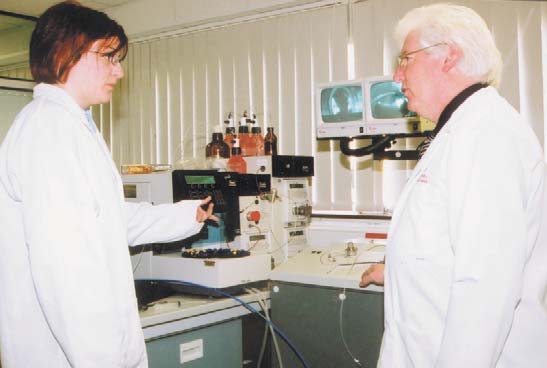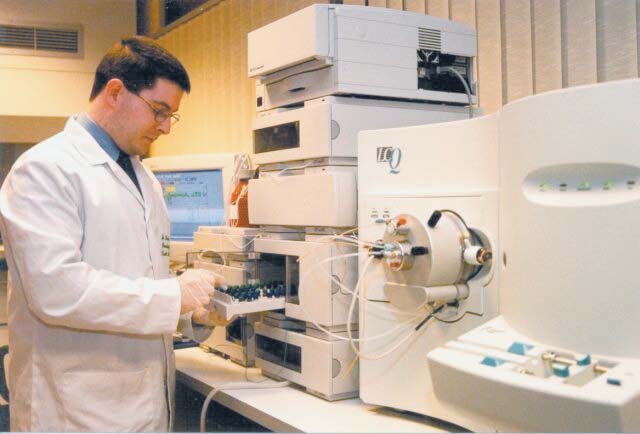| 2005 |

|
YEAR BOOK |
Cork Institute of Technology
|
Drugs from the sea: marine bio-prospecting
|
The ocean is the richest source of chemical diversity in our world, it covers 70% of the earth's surface and hosts in excess of 300,000 described species of plants and animals, as well as very large numbers of microbial species, including bacteria, micro algae and fungi. Since the 1990's, several marine species have been used as a source of unique bioactive compounds, which have been exploited for the development of a range of drug products.
A case in point is the drug Cytarabine, used for the treatment of a range of lymphomas and leukaemias, which was developed following the isolation of C-nucleocides from the Caribbean sponge, Cryptotheca [1]. One of the most successful anti-cancer agents effective against melanoma and ovarian cancer, Bryostatin 1, is derived from the marine bryozoan, Bugula Neritina [2]. Luffariella variabilis , the Palauan sponge, secretes a substance called sesterterpene manolid, which has been demonstrated to exert a powerful anti-inflammatory and analgesic effect in humans; its mode of action is as a synovial PLA 2 inhibitor; PLA 2 is involved in the pathogenis of many inflammatory diseases in humans [3].


PROTEOBIO is responding to an economic and strategic shift in emphasis in Ireland from the production of bulk pharmaceuticals to the discovery and development of new drugs. This shift has been in an area that is driven and supported by the IDA and is one of the targets set for Ireland under the National Development Plan and is a key area driven by IDA policy. Such developments provide employment opportunities for science graduates and will expand Ireland's position in the bio-pharma sector.
Ireland has always had a humanitarian role in international affairs. The discovery and isolation by PROTEOBIO of bacterial derived anti-protozoan agents, that may potentially combat diseases that afflict the developing world, will continue an altruistic tradition that the Irish are renowned for worldwide. In the long term, it is anticipated that this project may lead to the utilisation and development of Ireland's marine natural resources, not previously exploited.
References
1. The Lancet, Oncology Vol 2 April 2001.
2. Med Res Rev 1999; 19:388-407. Wender P.A., et al. The rational design of potential chemotherapeutic agents: the synthesis of byrostatin analogues.
3. Garcia-Pastor, P., et al. (1999) Modulation of acute and chronic inflammatory processes by cacospongionolide B, a novel inhibitor of human synovial phospholipase A 2 , Br. J. Pharmacol. 126, 301-311].
Contact: Dr Kevin J. James (Director);
Dr Ambrose Furey (Manager),
PROTEOBIO (Mass Spectrometry Centre for Biotoxin and Proteomics Research),
Department of Chemistry, Cork Institute of Technology, Bishopstown, Cork.
Tel: 021-4326701; Fax: 021-4345191;
E-mail: [email protected] / [email protected]